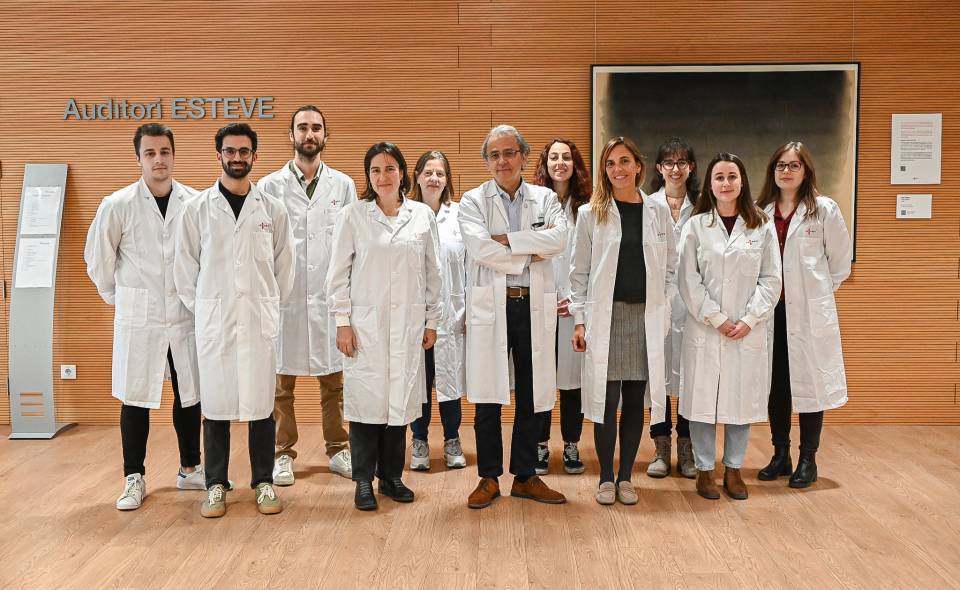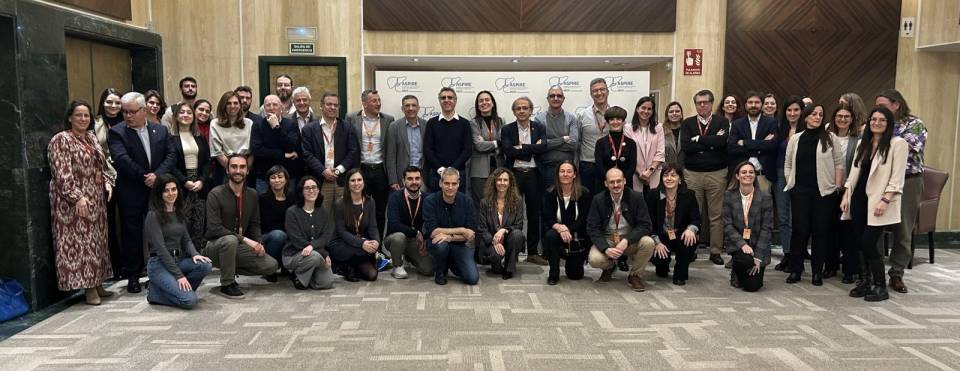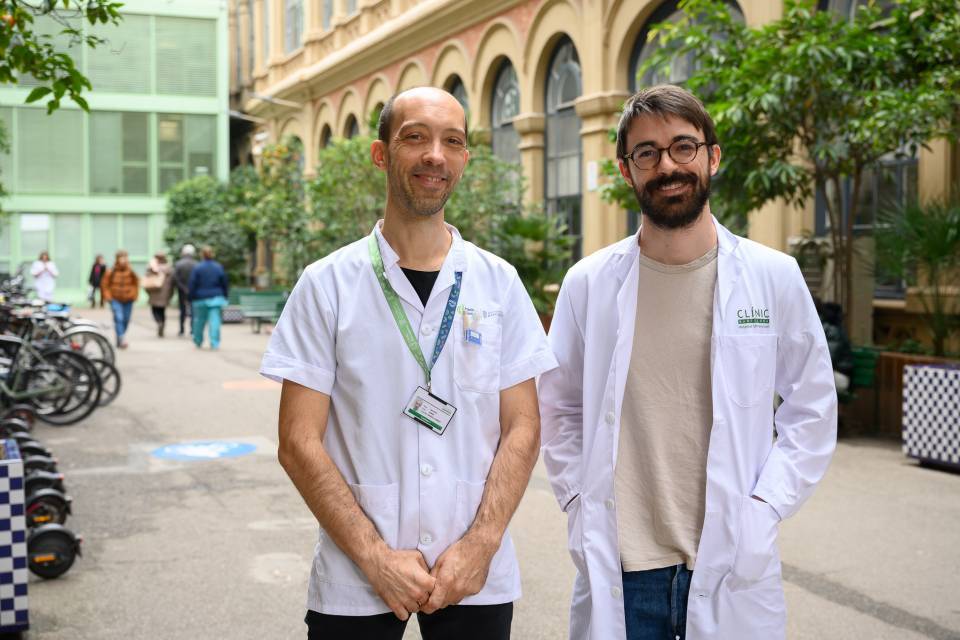Treatment of liver cancer
Treatment options depend on various parameters including the stage of the tumour (according to the BCLC system for hepatocellular carcinomas), related diseases and specific technical aspects of each treatment (e.g., the location of the lesion).
Once patients have been diagnosed with liver cancer, a multidisciplinary team assesses complicated cases on an individual basis to offer the therapeutic option with the greatest probability of curing each patient.
The multidisciplinary team comprises all of the healthcare professionals directly involved in the diagnostic process and treatment of liver cancer, namely hepatologists, radiologists (including specialists in interventional radiology), nuclear medicine specialists, hepatobiliary surgeons, pathologists, oncologists and nursing staff.
Liver surgery is performed under general anaesthesia and essentially there are two approaches:

Laparoscopic surgery. Laparoscopic surgery is a minimally invasive technique that is carried out without the need for large incisions. This approach reduces the amount of postoperative pain and breathing complications, improves aesthetic results and cuts patient recovery times. Recent studies have confirmed the technique results in similar survival rates to those observed with conventional surgery, so it is now the preferred approach. Its applicability is determined by tumour location.

Laparotomic surgery. This type of intervention requires large incisions in the abdominal wall, which is associated with a longer period of postoperative recovery. In many cases, particularly when dealing with tumours located in posterior segments of the liver or which need an extensive resection, it is the only viable treatment option.
This is the treatment of choice in patients with a single tumour for whom the final objective is to completely remove all the malignant cells in an attempt to cure the disease.
Surgical resection is only applicable in a minority of patients, as tumours typically develop due to underlying liver cirrhosis and extensive resections are unfeasible in these cases because there is a risk of postoperative liver failure. If the patient has cirrhosis but without compromised liver function, then the case requires very careful assessment to determine the risk of postoperative complications or decompensation.
Portal hypertension (high pressure affecting the portal vein, which carries blood containing nutrients from the stomach and intestines), as a parameter closely related to the extent of liver fibrosis and severity of the cirrhosis, must be assessed to determine which patients are candidates for surgical resection.
In carefully chosen cases, liver resection is very safe (perioperative mortality is less than 1%) and offers a 5year survival rate of over 70% in patients with hepatocellular carcinoma and 40–50% in those with cholangiocarcinoma. Despite the careful selection of candidates and the excellent results obtained in terms of survival, the recurrence rate following total resection is very high and can reach 50–70% at 5 years.
To date, no treatments have proven effective in preventing liver tumours from returning. As such, patients must receive close monitoring in order to identify any tumour recurrence as early as possible and to offer them additional effective treatments.
Common postoperative complications of liver cancer surgery are infections (especially surgical wound and respiratory infections), abdominal fluid retention (ascites) and a deterioration in liver function, which is rare and usually only temporary.
In the long term, patients may suffer from mild pain and hypersensitivity at the incision site and, in some cases, an eventration (hernia) of the incision.
For hepatocellular carcinoma, a liver transplant is the treatment of choice in patients with abnormal liver function that prohibits safe surgical resection. It is also the ideal option for patients who have more than one tumour inside the liver.
The suitability of liver transplants depends on the risk of the tumour’s recurrence and the availability of donor organs, which means patient selection must be confined to those who may genuinely benefit from a transplant. The risk of recurrence is primarily determined by the extent of each tumour, hence there is a greater risk for cancers involving larger or multiple tumours and therefore limits have to be defined in terms of the size and number of lesions.
One advantage of liver transplants, besides being a very effective treatment to achieve the total elimination of the tumour, is that they resolve the underlying chronic liver disease. On the other hand, after receiving a transplant, patients must take medications for the rest of their lives to avoid organ rejection, which can entail long-term side effects requiring lifelong medical monitoring.
A liver transplant is contraindicated in patients with cholangiocarcinoma because there is a high risk of post-transplant recurrence. A transplant can only be offered in very select cases (single tumours of more than 2 cm), as the results are similar to those for hepatocellular carcinomas.
Percutaneous ablation is the treatment of choice in patients with an early stage hepatocellular carcinoma who are not candidates for surgical resection and a liver transplant is contraindicated due to associated diseases.
Tumour ablation can be carried out by instilling (introducing) chemicals, mainly ethanol, or by altering the temperature inside the tumour, as is the case with radiofrequency or microwave ablation.
At the time of writing, radiofrequency ablation (RFA) is the standard technique. It entails piercing the skin with a thin, needle-like probe and inserting into the tumour. A high-frequency electrical current is then passed through the tip of the probe, which heats the tumour and destroys the cancer cells. It is a very safe treatment that only requires hospitalisation for 1 day and which is highly effective in tumours of less than 3 cm; it can even achieve similar outcomes to surgical resection in patients with just one tumour that is smaller than 2 cm in diameter.
The use of this therapeutic strategy basically depends on tumour location. As with surgical resection, the main disadvantage of percutaneous ablation is the high likelihood of tumour recurrence despite obtaining a complete initial response.
Percutaneous ablation is also viable in a select group of cholangiocarcinoma patients (small tumours contained within the liver in patients who are not candidates for surgical resection).
This treatment is based on the fact that hepatocellular carcinomas predominantly receive blood through the hepatic artery, unlike the rest of the liver which is supplied by the portal vein as well.
The treatment involves placing a catheter in the hepatic artery and other arteries supplying the tumour, followed by the injection of a chemotherapy agent. Finally, a coagulant is used to block the arterial blood flow.
TACE has proven its efficacy in clinical trials and is the treatment of choice in patients with an intermediate-stage hepatocellular carcinoma. This procedure is not recommended for patients with cirrhosis and damaged (decompensated) liver function, an extensive lesion or a decreased portal vein flow velocity, as they present a high risk for decompensation of their liver disease.
This treatment requires hospitalisation for 2 days and while it is generally well tolerated, it can cause associated side effects, mainly abdominal pain, nausea and vomiting, for the first few days following the operation. What is more, this procedure is usually repeated several times to obtain maximum efficacy.
Just like for surgical resection and ablation, the main drawback of TACE is that, despite an initial response, the disease subsequently progresses in most patients leading to treatment failure.
TACE has not proven effective in the treatment of cholangiocarcinomas and therefore it is not recommended.
In hepatocellular carcinoma, conventional chemotherapy (normally using doxorubicin and oxaliplatin) has never been shown to provide a significant benefit to patient survival and is associated with side effects, so its use is not recommended.
In recent years, there have been significant advances in our knowledge of the molecular alterations that influence tumour onset and progression. This has facilitated the development of agents that act specifically at the level of the altered molecular pathways.
One such example is sorafenib, an oral drug that acts by blocking different signalling pathways associated with the development and progression of hepatocellular carcinoma, thus reducing tumour angiogenesis (the formation of new blood vessels to supply the tumour, a vital process in its growth and progression) and slowing cell proliferation.
The most frequent side effects are diarrhoea, weight loss and hand–foot syndrome (a condition that exclusively affects the palms and/or soles, with symptoms ranging from erythema [reddening of the skin] to blisters and areas of necrosis), generally of a mild and easily controlled nature.
As second-line treatments, three agents have been shown to improve survival rates in random, placebo-controlled clinical trials. They are regorafenib, cabozantinib and ramucirumab.
In intrahepatic cholangiocarcinoma, the only treatment that has proven effective for inoperable tumours is combination chemotherapy with gemcitabine and cisplatin. The combination is very well tolerated and produces predictable, easily managed side effects. If this first-line therapy fails, there are no accepted second-line options.
Substantiated information by:




Published: 13 May 2020
Updated: 13 May 2020
Subscribe
Receive the latest updates related to this content.
Thank you for subscribing!
If this is the first time you subscribe you will receive a confirmation email, check your inbox


